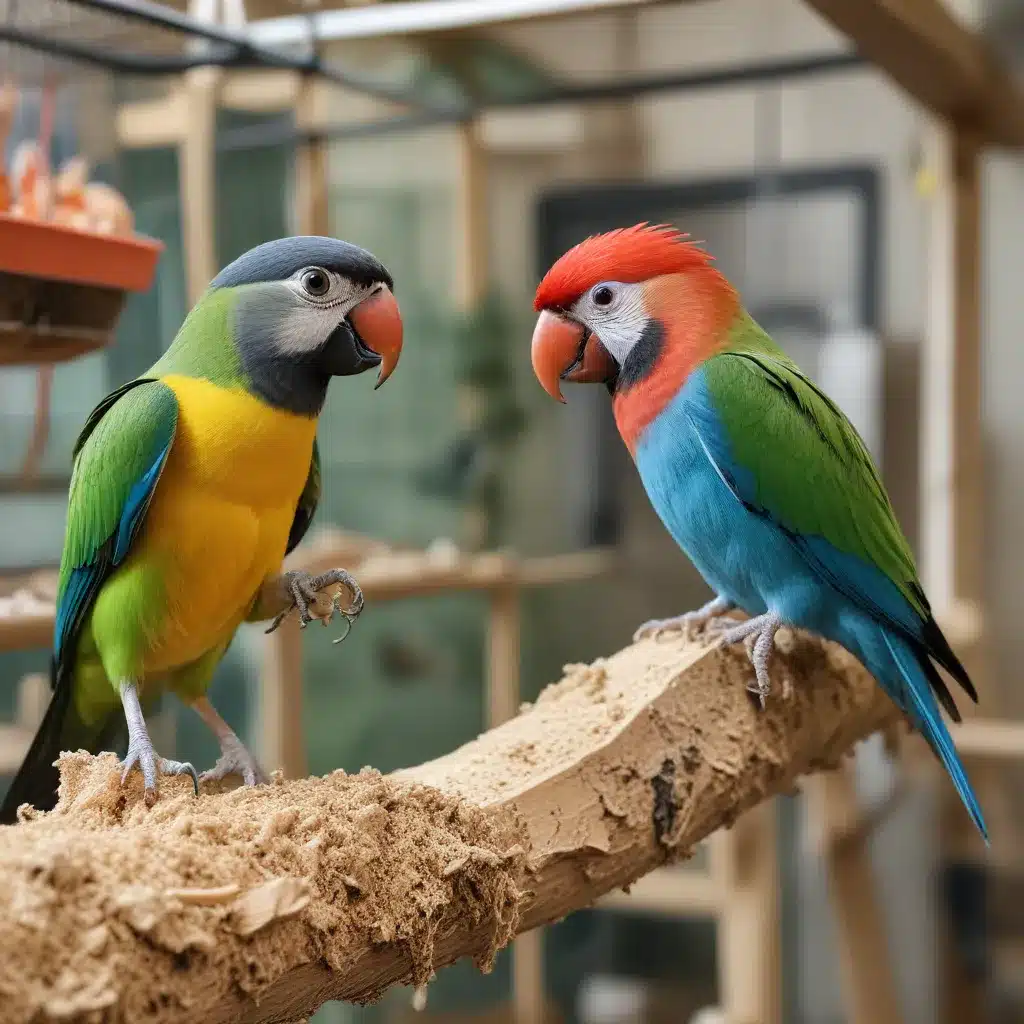
Avian Behavior and Enrichment: Designing Engaging Environments for Indoor Pet Birds
As an experienced avian caretaker, I’ve had the privilege of working with a wide variety of companion bird species over the years. From the charismatic cockatoos to the playful parakeets, each feathered friend has unique behavioral characteristics and enrichment needs. Whether you’re the proud parent of a single parrot or caring for an entire flock, understanding your birds’ natural behaviors and designing engaging indoor environments is key to their long-term health and happiness.
Bird Species and Habitats
The world of companion birds is truly diverse, encompassing species found in tropical rainforests, arid deserts, and everywhere in between. Many popular pet birds, such as cockatiels, cockatoos, macaws, and amazons, hail from the lush forests of Australia and South America. These vibrant parrots are adapted to life in the canopy, spending their days foraging, socializing, and navigating their complex arboreal homes.
In contrast, budgies (or parakeets) and cockatiels originate from the more open woodlands and scrublands of Australia, where they thrive in close-knit flocks. Even smaller finches and canaries, while not technically parrots, share many behavioral traits with their larger cousins. No matter the species, each bird brings a unique set of needs and preferences to their indoor living space.
Behavioral Characteristics
To truly understand how to enrich the lives of our feathered companions, we must first examine their natural behaviors and the vital roles they serve in the wild. Chief among these is the fundamental need to forage. In their native habitats, birds can spend up to 80% of their day searching for, procuring, and consuming food. This constant quest for sustenance shapes their daily routines and is a critical component of their physical and mental well-being.
Beyond foraging, birds engage in a range of social behaviors that are equally important. Parrots, in particular, are highly social creatures, living in close-knit family groups and engaging in complex communication through vocalizations, body language, and even physical touch. Nesting, breeding, and raising young are also deeply ingrained behaviors that contribute to a bird’s overall sense of purpose and fulfillment.
Enrichment Strategies
When it comes to designing enriching environments for our indoor avian companions, we must strive to create spaces that allow for the expression of these natural behaviors. This is where the concept of environmental enrichment comes into play – the strategic introduction of physical, sensory, and occupational stimuli to promote healthy, species-typical activities.
Physical Enrichment
At the core of any enrichment program are the physical elements that allow birds to engage in locomotor behaviors, such as climbing, flying, and perching. Providing a variety of appropriately sized perches, ladders, swings, and other structures encourages natural movement and exercise. Introducing manipulable toys and foraging opportunities, such as shredded paper, cardboard boxes, or puzzle feeders, taps into their innate problem-solving and exploratory drives.
Sensory Enrichment
Captive birds often lack the diverse sensory input they would experience in the wild. By incorporating visual, auditory, and even olfactory stimuli into their environments, we can stimulate their senses and prevent boredom. Hanging mirrors, playing nature soundtracks, or introducing new scents (such as dried herbs or spices) can all contribute to a more engaging and stimulating living space.
Occupational Enrichment
In addition to physical and sensory enrichment, birds also benefit from opportunities to engage in cognitive tasks and make choices within their environments. This could include introducing novel objects or rearranging their living space to encourage exploration and problem-solving. Providing access to separate “retreat” areas can also give birds a sense of control and privacy, mirroring the natural tendency of wild birds to seek refuge in their territories.
Designing Indoor Enclosures
When it comes to creating an enriching indoor environment for our pet birds, the size and configuration of their enclosure plays a crucial role. While the “bigger is better” rule generally applies, it’s important to strike a balance between providing ample space for flight and natural behaviors and ensuring the enclosure is appropriately furnished and maintained.
Cage Size and Furnishings
At a minimum, a bird’s cage should be large enough to allow for full wing-span extension and unimpeded flight. Taller cages with multiple levels and perches of varying sizes and textures encourage climbing and movement. Strategically placing toys, foraging opportunities, and hiding spots throughout the enclosure can also help stimulate their natural curiosity and exploratory drive.
Lighting and Temperature
Proper lighting and temperature regulation are essential for maintaining the health and well-being of indoor birds. Aim to provide a photoperiod (day/night cycle) that mimics their natural habitat, and ensure the ambient temperature remains within the optimal range for your specific species. Incorporating full-spectrum lighting can also help support their overall physiological and behavioral needs.
Ventilation and Sanitation
Effective airflow and regular cleaning are crucial for maintaining a safe and healthy environment for your feathered friends. Adequate ventilation helps reduce the buildup of airborne contaminants, while a diligent cleaning routine (with bird-safe products) minimizes the risk of disease and promotes overall hygiene.
By designing enriching indoor spaces that cater to the unique behavioral characteristics of our companion birds, we can help ensure they thrive and lead happy, healthy lives. Whether you’re caring for a single parrot or a flock of finches, the principles of environmental enrichment can be applied to create engaging, species-appropriate living conditions. After all, our feathered friends deserve to live their best lives, even within the confines of our homes.
For more information on avian care and enrichment, be sure to check out the resources available on the Mika Birds Farm website. Our team of experts is dedicated to providing comprehensive guidance and support to bird enthusiasts like yourself. Together, we can create a world where our beloved companions can truly soar.


